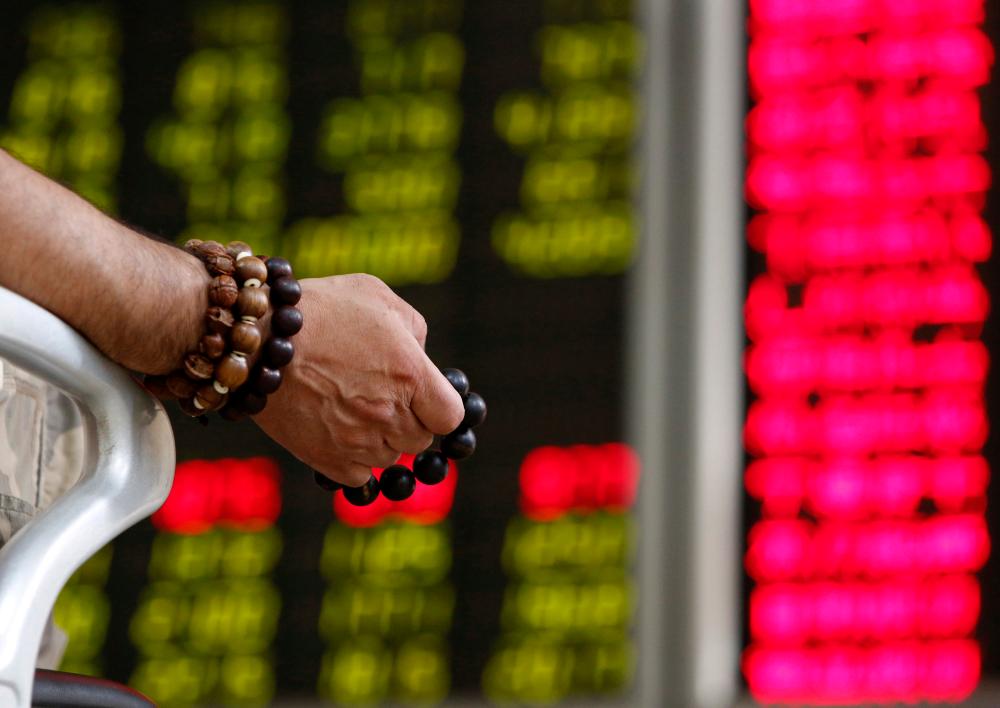SYDNEY: Asian shares fell for a second straight session on Wednesday to one-month lows as investors speculated surging commodity prices and growing inflationary pressure in the United States could lead to earlier rate hikes and higher bond yields globally.
MSCI's broadest index of Asia-Pacific shares outside Japan faltered 0.5%, after tumbling 1.6% on Tuesday for its biggest daily percentage drop since March 24.
“There isn’t a clear catalyst behind this purge,“ said Marios Hadjikyriacos, investment analyst for XM.
“It seems to be a combination of inflation fears making a comeback and some market participants moving higher along the value spectrum, cutting their exposure to anything with a stretched valuation.”
At 682 points, the regional index is not too far from a record high of 745.89 touched in February and is still up 3% this year so far, on top of a 19% jump in 2020 and a near 16% rise in 2019.
Shares in China opened in the red, with the blue-chip index off 0.2%.
Australian stocks slipped 0.6% while South Korea's KOSPI index skidded 0.7%. Japan's Nikkei reversed early gains to be down 0.4%.
Analysts, however, doubted the sell-off would extend much further in a world of easy accommodative policy and fiscal largesse.
Overnight on Wall Street, technology stocks were among the biggest losers though the tech-focused Nasdaq reversed the bulk of its early 2% decline over the course of the day. The Dow dropped 1.4% and the S&P 500 fell 0.9%.
The equity rout barely helped drive any safe haven flows into the greenback even as futures pointed to yet another negative open for Wall Street. E-mini futures for the S&P 500 nudged 0.3% lower in early Asian trading.
“What is unusual about the last two days is that the equity-market angst did not provide the U.S. dollar with a notable lift,“ said Alvin T. Tan, head of Asia FX strategy at RBC Capital Markets.
Tan said there was no sign of “risk-off” among regional currencies either with the high-carry Indian rupees and Indonesia rupiah largely holding their ground.
“Still, it is not yet obvious if this signifies a new market paradigm. As they say, one swallow does not make a summer,“ Tan added.
All eyes are now on the U.S. consumer price index report to be released by the U.S. Labor Department on Wednesday with market-based measures of inflation expectations having moved higher.
Treasury yields have remained stuck to a tight range. The yield on benchmark 10-year Treasuries edged lower to 1.6235%, a far cry from the 2% level seen in before the coronavirus pandemic.
The U.S. Federal Reserve expects higher inflation though officials have pointed to transient factors and base effect for the temporary rise.
“The upshot is the Fed remains far away from achieving its aim of average inflation of 2% per year. The Fed’s ultra-accommodative monetary policy is part of the reason why we consider the USD downtrend is intact,“ said Commonwealth Bank of Australia analyst Carol Kong.
The dollar was up 0.2% against the Japanese yen at 108.84 as it meandered in a narrow 107-110 band.
The dollar index, which measures the greenback against six major currencies, was little changed at 90.297, after touching a two-month low of 89.979.
The currencies of major natural resource suppliers such as Canada stood firm amid rising commodity prices.
The loonie held near a 3-1/2-year high of C$1.2078.
The Australian dollar, another proxy for commodity prices, was not far from a 10-week high of $0.7891 struck on Monday.
Oil prices were lifted by fears of a gasoline shortage after a cyber attack caused an outage at the largest U.S. fuel pipeline system.
U.S. crude gained 17 cents to $65.45 a barrel. Brent crude added 15 cents to $68.70 per barrel.
Spot gold was off at $1,829.9 an ounce.
In cryptocurrencies, ether hovered near record highs touched on Monday to be at $4,162.86. The value of the second-biggest digital token has surged over 5.5 times so far this year. - Reuters













